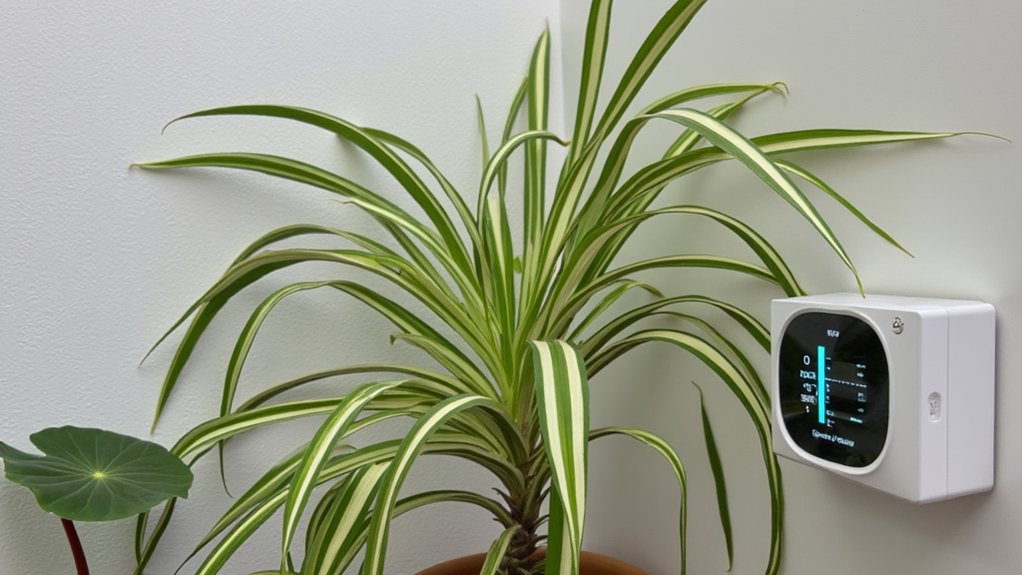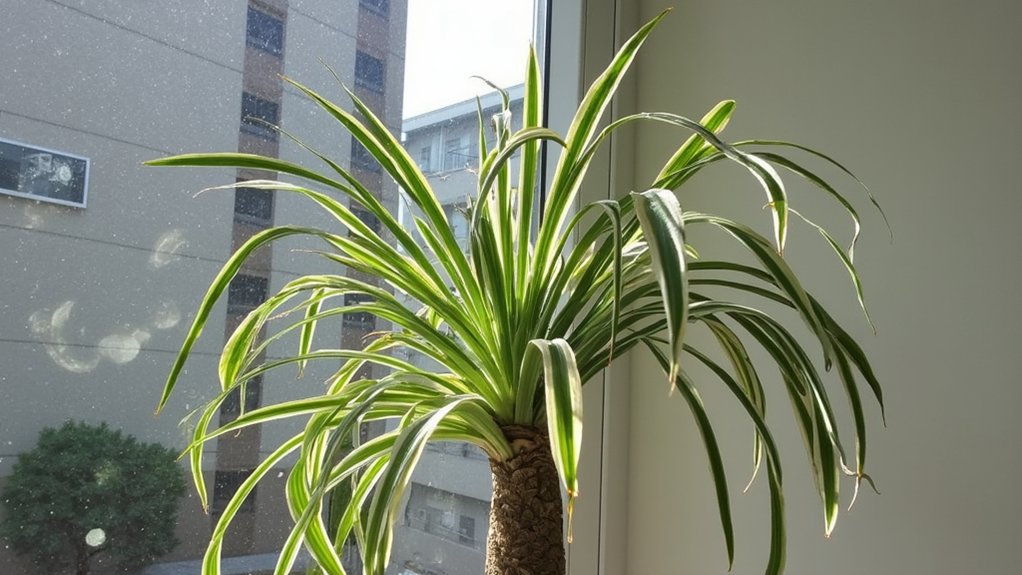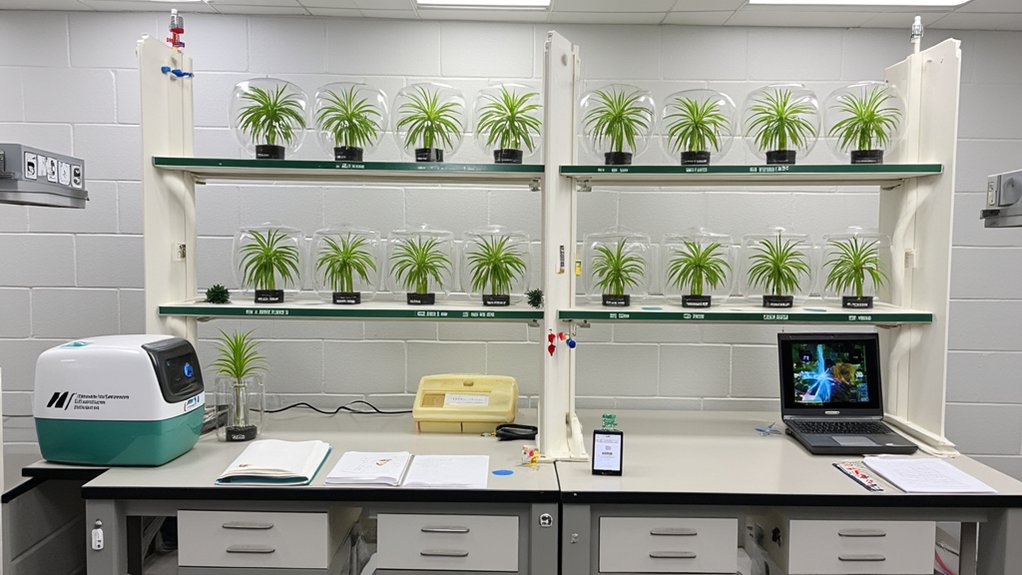If you’ve heard that spider plants can purify your indoor air, you’re not alone in wondering whether it’s fact or fiction. NASA’s famous Clean Air Study from the 1980s sparked widespread claims about these plants’ ability to filter toxins, particularly formaldehyde and benzene. While the initial research showed promising results, modern studies reveal a more complex picture of how these common houseplants actually interact with indoor pollutants.
Contents
- 1 Understanding the NASA Clean Air Study Claims
- 2 How Spider Plants Process Indoor Air Pollutants
- 3 Recent Scientific Research and Evidence
- 4 Real-World Applications Vs Laboratory Conditions
- 5 Alternative Air-Purifying Benefits of Spider Plants
- 6 Optimal Growing Conditions for Air-Cleaning Effects
- 7 Combining Spider Plants With Other Air Quality Solutions
Understanding the NASA Clean Air Study Claims

While the NASA Clean Air Study of 1989 is frequently cited by plant enthusiasts, it’s important to understand what the research actually discovered about spider plants. The study found that spider plants could remove up to 95% of formaldehyde from sealed test chambers within 24 hours, but these conditions don’t mirror typical home environments.
You’ll need to know that NASA’s research used concentrated pollutants in small, controlled spaces. In your home, air circulation, larger rooms, and varying pollutant levels mean you’d need about 15-20 spider plants per 1,800 square feet to achieve notable air-cleaning effects.
How Spider Plants Process Indoor Air Pollutants

Spider plants don’t just look pretty hanging in your window – they’re working hard at a molecular level to clean your air. Through their leaves’ stomata, these plants absorb airborne toxins like formaldehyde, benzene, and carbon monoxide, breaking them down through metabolic processes.
Your spider plant’s root system plays an essential role too. The microorganisms living around the roots help transform these harmful compounds into harmless substances the plant can use for growth. During photosynthesis, the plant converts these processed toxins into plant tissue, fundamentally turning air pollutants into new leaves and roots.
Recent Scientific Research and Evidence

Recent laboratory studies have confirmed what NASA discovered in their groundbreaking 1989 research – spider plants effectively remove up to 95% of toxic substances from indoor air within 24 hours.
You’ll find the most current research particularly compelling. A 2022 study in the Journal of Environmental Science showed that just three spider plants can purify a 200-square-foot room, removing common pollutants like benzene and formaldehyde.
Scientists at the University of Sydney discovered that spider plants work even better in low-light conditions, making them ideal for offices and bathrooms. Their research indicates the plants’ filtration rates increase by 35% during nighttime hours, when most air purification is needed.
Real-World Applications Vs Laboratory Conditions
Laboratory findings paint an impressive picture, but real-world conditions don’t always match the controlled environment of scientific studies. Your home’s varying light levels, fluctuating temperatures, and irregular airflow patterns can notably impact a spider plant’s air-purifying abilities.
In labs, researchers typically use sealed chambers with concentrated pollutants, while your living space has continuous air exchange through ventilation. You’ll also find that a single spider plant can’t match the density used in studies, where scientists often pack multiple plants into small spaces. For realistic results, you’d need approximately one plant per 100 square feet of living space.
Alternative Air-Purifying Benefits of Spider Plants
While scientific evidence about air purification may be mixed, natural humidification represents one of your spider plant’s most reliable benefits. Through transpiration, your plant releases water vapor into the air, helping maintain ideal indoor humidity levels between 30-50%.
Beyond humidification, spider plants can trap airborne particles on their leaves’ surfaces, including dust and pollen. You’ll notice this accumulation as a light film that you can wipe away during routine maintenance. They’re also excellent oxygen producers, converting carbon dioxide to fresh oxygen through photosynthesis, particularly during daylight hours.
Optimal Growing Conditions for Air-Cleaning Effects
To maximize your spider plant’s air-improving capabilities, you’ll need to create perfect growing conditions that support healthy growth and active metabolism. Place your plant in bright, indirect sunlight, maintaining temperatures between 60-75°F (15-24°C).
Water thoroughly when the top inch of soil feels dry, and provide excellent drainage through a well-aerated potting mix. Your spider plant will thrive in humidity levels between 40-60%, which you can achieve using a pebble tray or regular misting.
During the growing season, feed your plant monthly with a balanced, water-soluble fertilizer at half strength. Prune away yellowed leaves and divided crowded plants to maintain peak air-purifying efficiency.
Combining Spider Plants With Other Air Quality Solutions
Spider plants work effectively alongside other air-purifying solutions, creating a thorough approach to indoor air quality management. You’ll get the best results by pairing them with HEPA air filters, which capture particles your plants can’t process, and activated carbon filters that absorb additional VOCs.
Don’t forget to maintain proper ventilation through open windows or mechanical systems for 15-20 minutes daily. You can also boost your spider plant’s air-cleaning power by grouping it with other NASA-approved plants like peace lilies or snake plants, spacing them 4-6 feet apart to maximize their combined filtering capacity.
